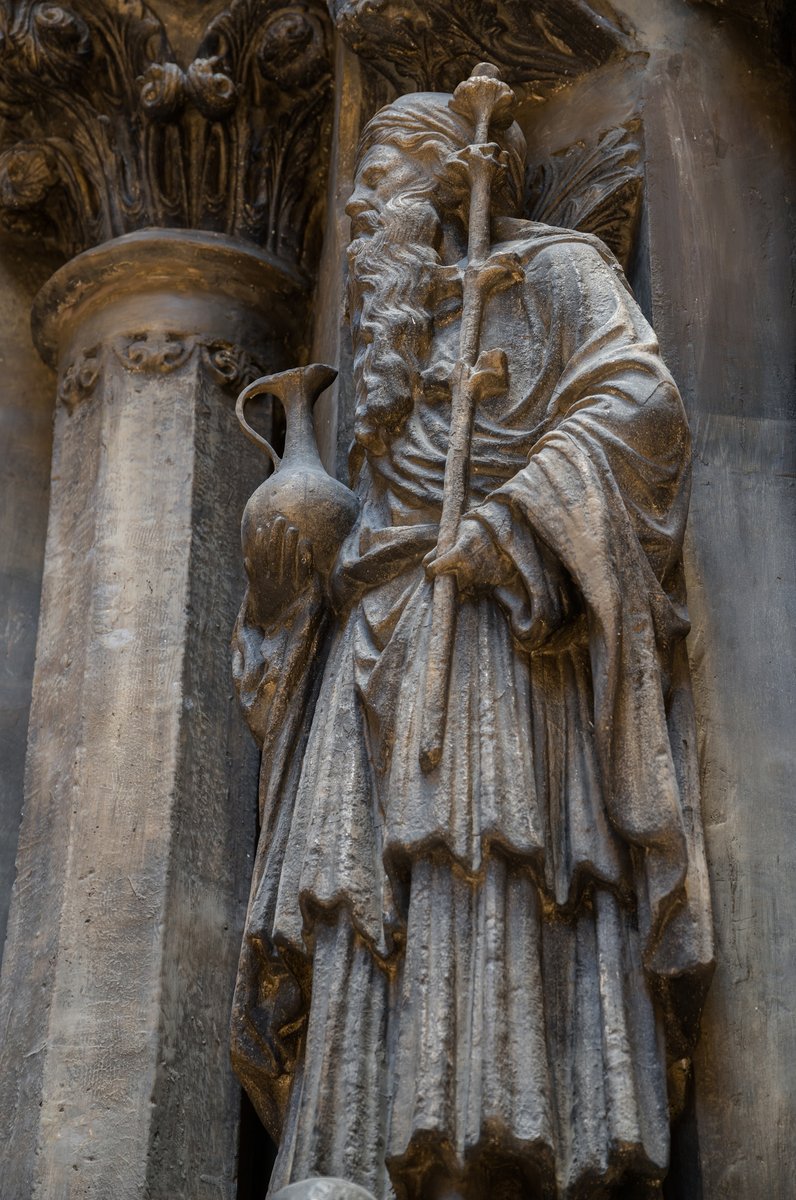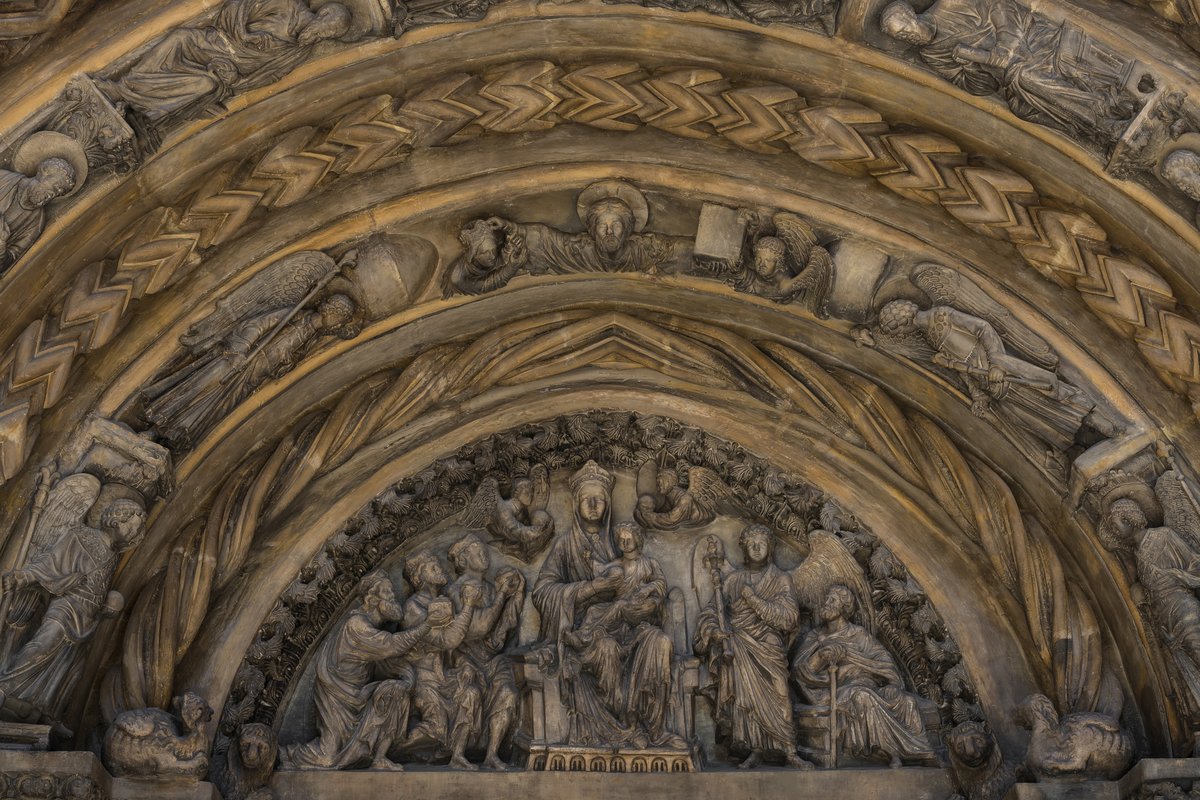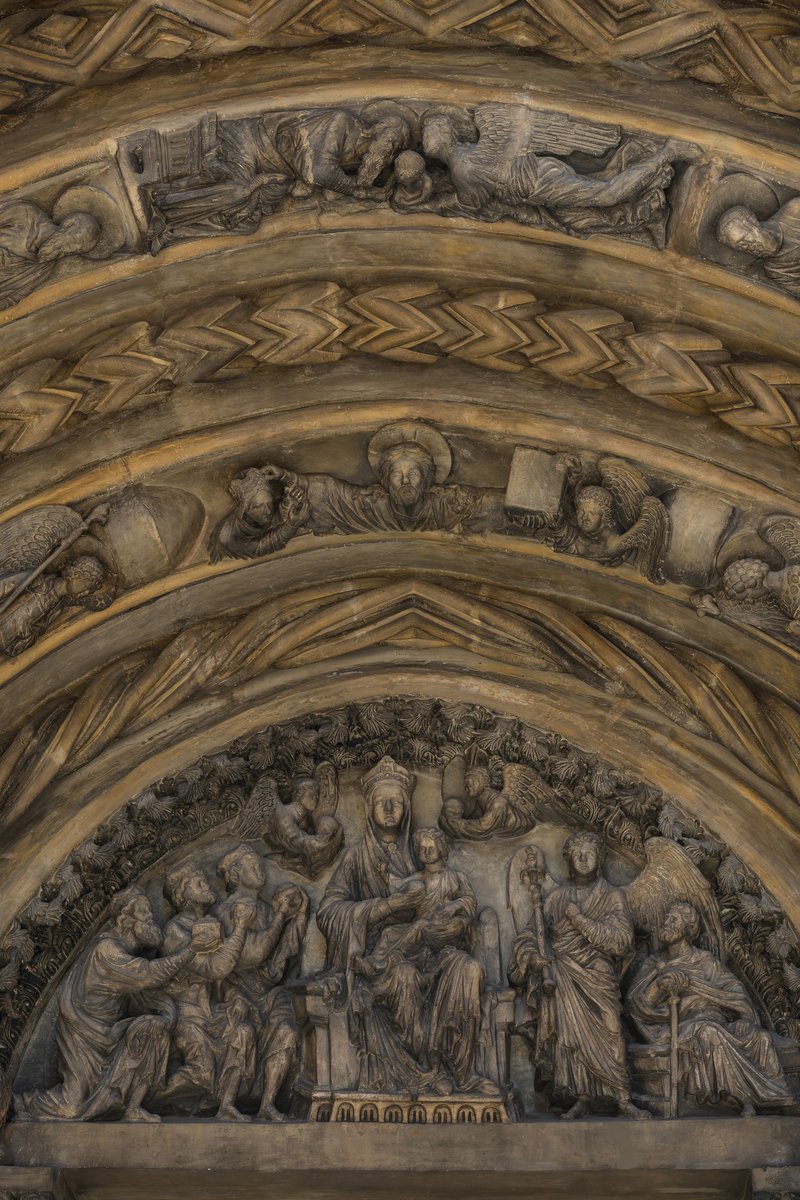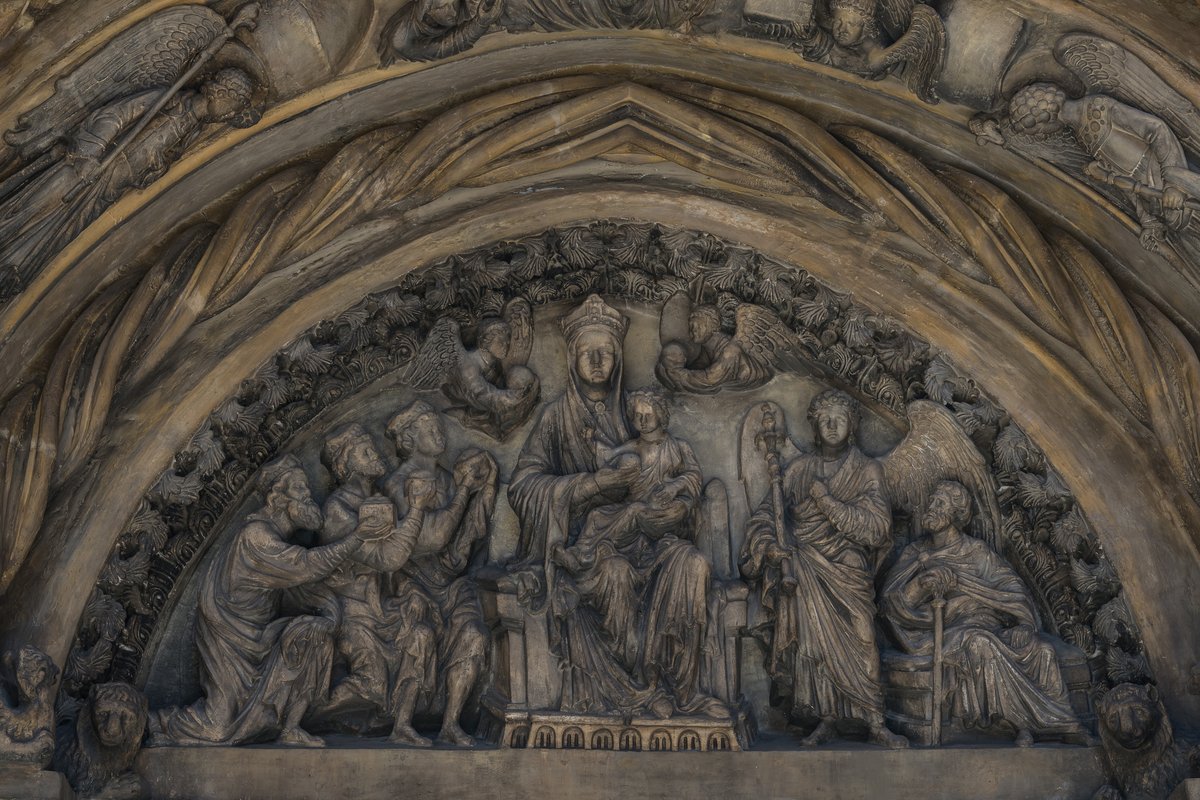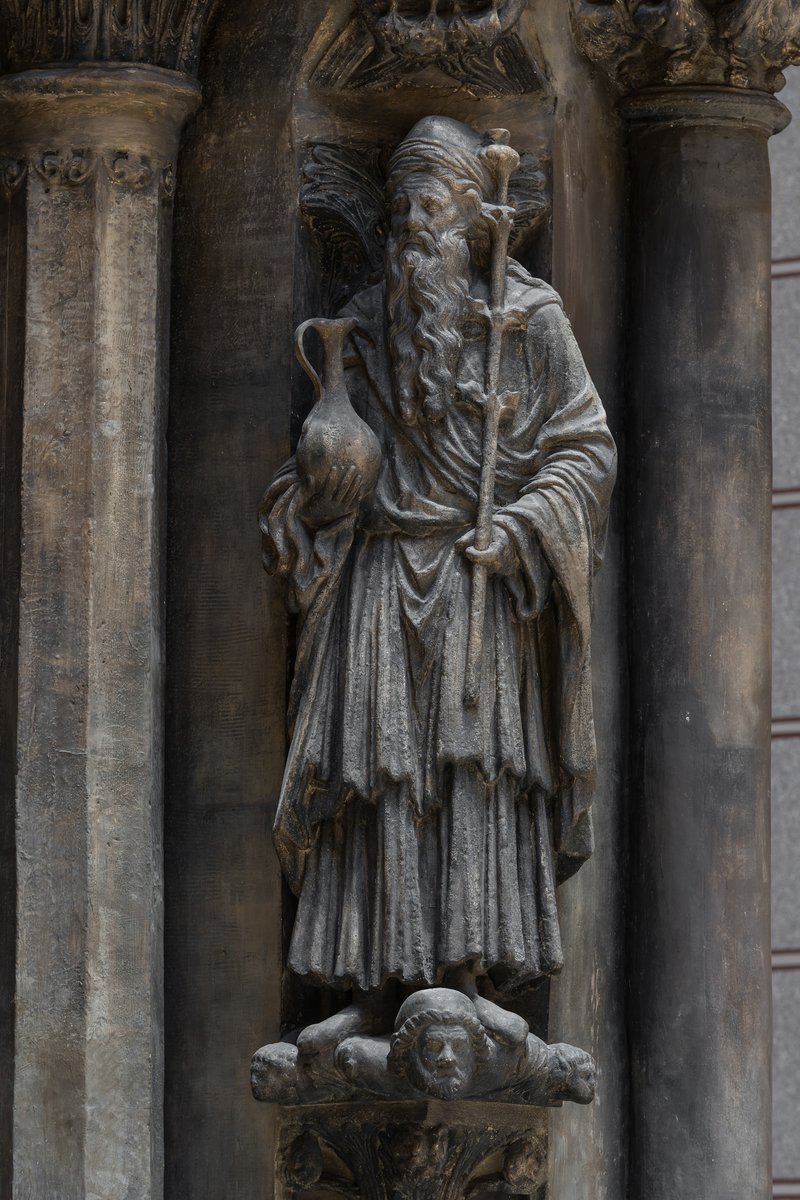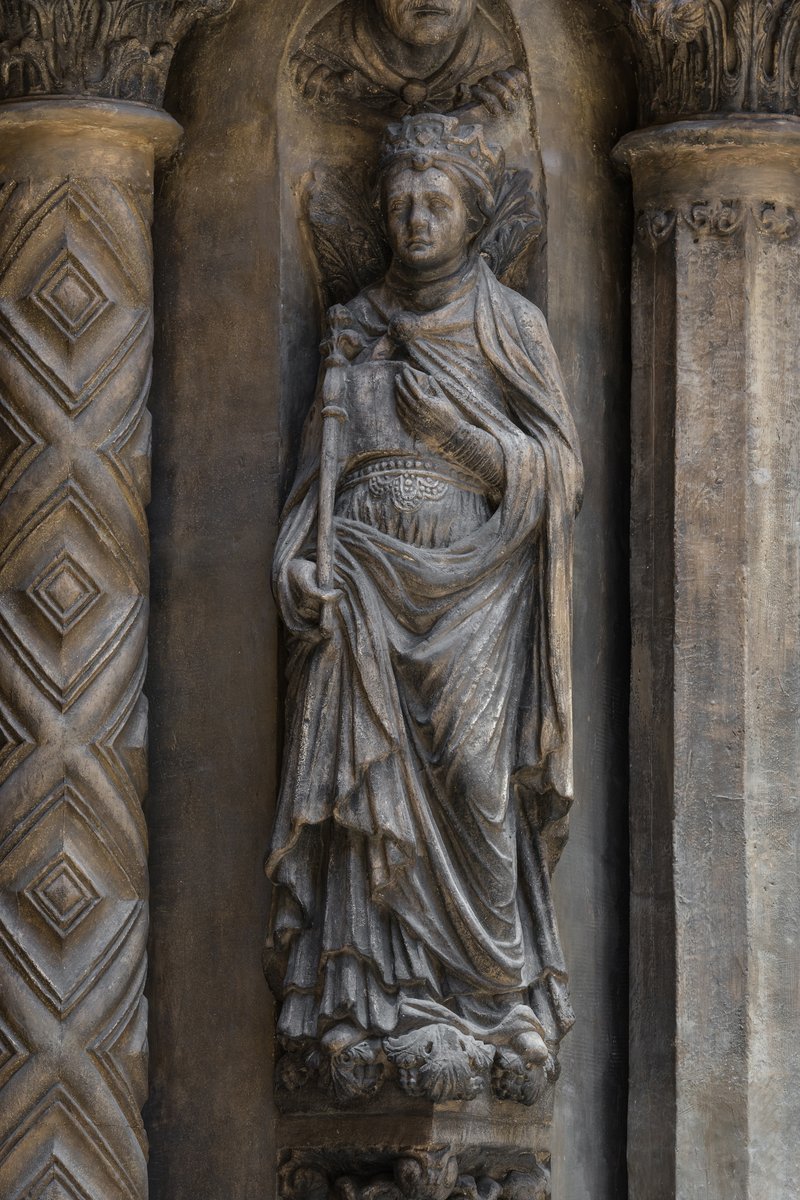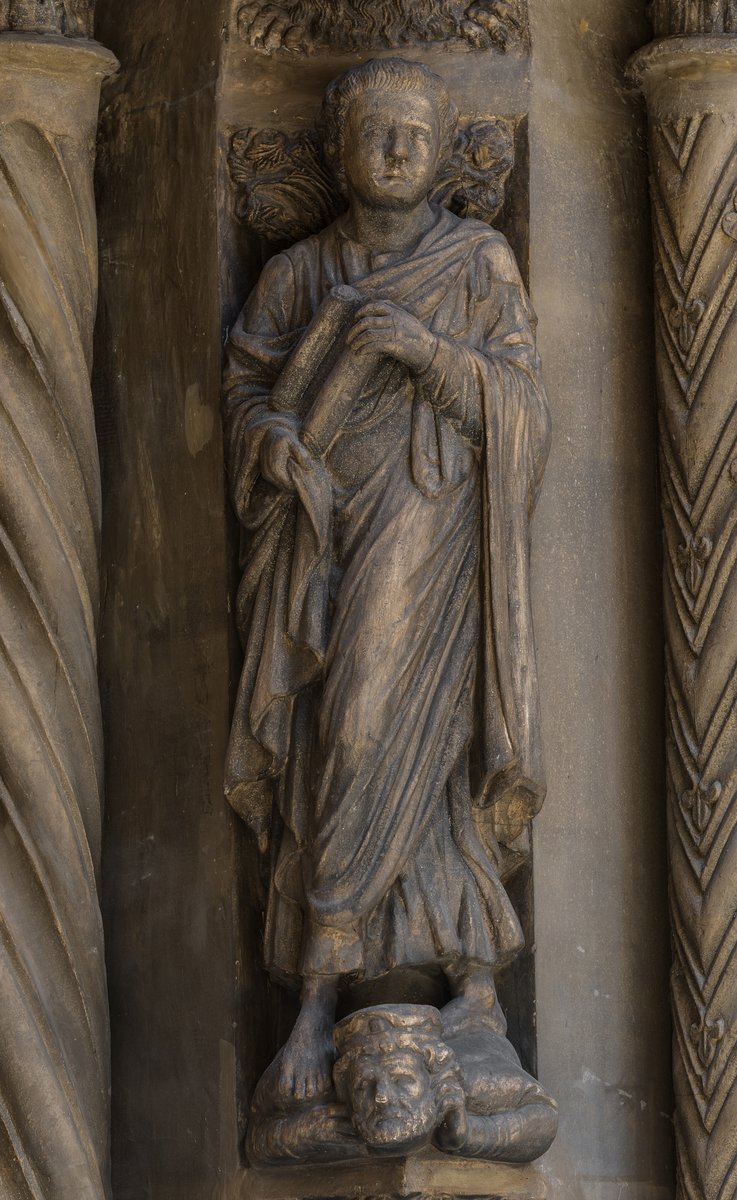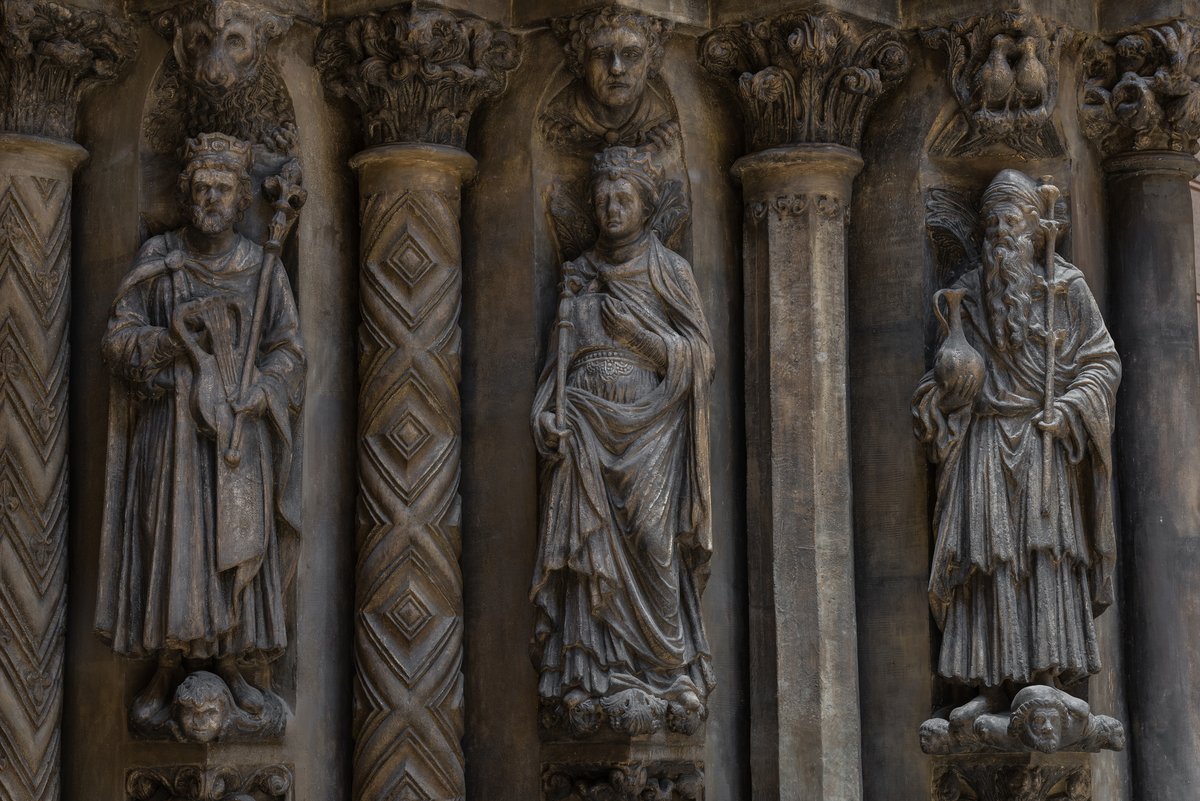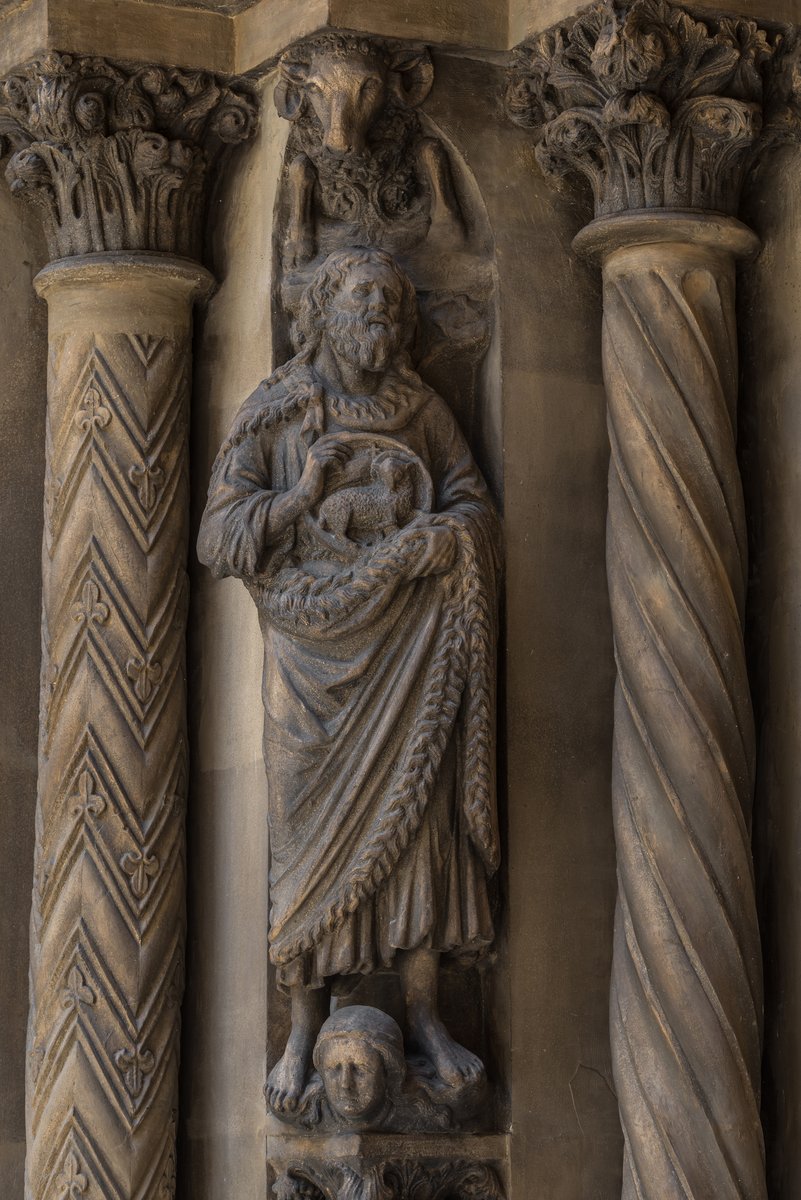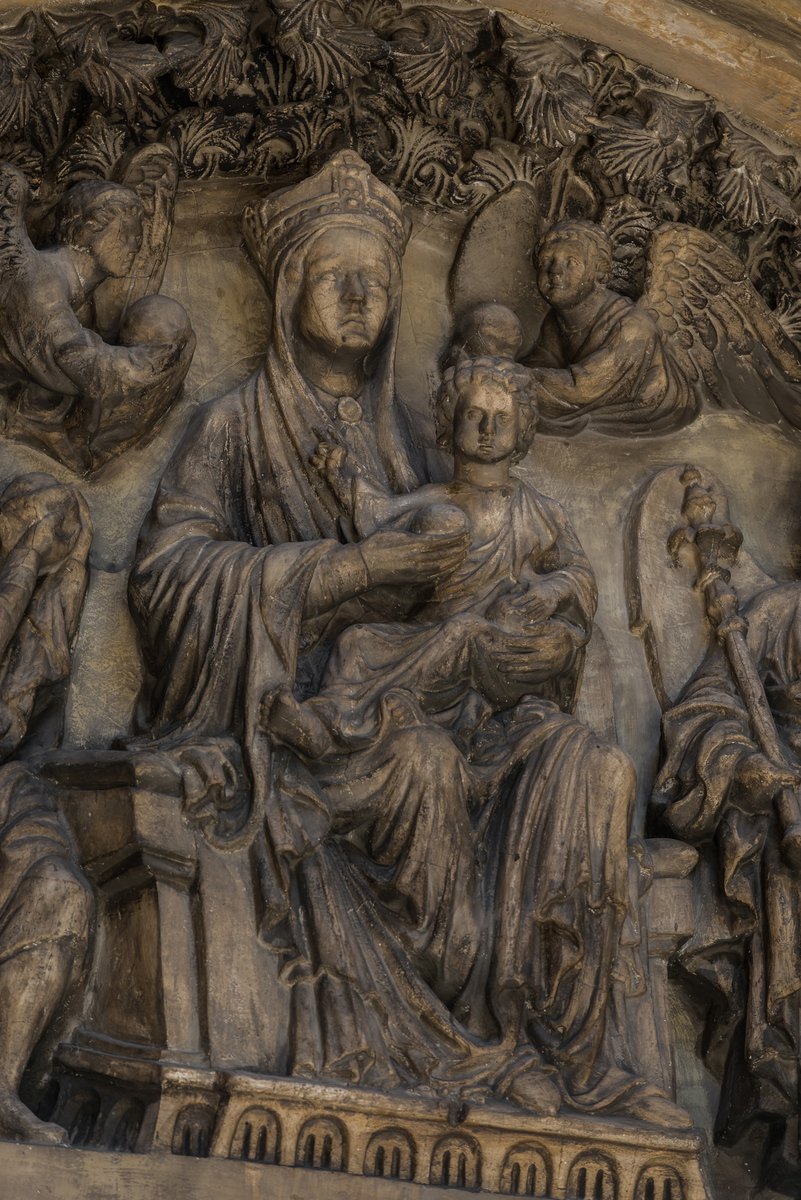The Golden Gate of Freiberg Cathedral
Saxon Sculptor, Albertinum (cast maker)- Artist
-
Saxon Sculptor
13th century
Albertinum
(cast maker)
Drezda
- Dated
- circa 1230
- Classification
- sculpture, plaster cast, doors
- Medium
- plaster
- Dimensions
- 780 × 843 × 318 cm
- Inv.no.
- Rg.6
- Department
- Sculptures - Plaster casts
- Current Location of the Original Artwork
- Germany, Freiberg, Cathedral
The so-called Golden Gate is a highlight of late Romanesque art. Carved of sandstone, it was originally the western portal of the late twelfth-century cathedral in Freiberg. However, after a great fire in 1484, it was transferred to the southern side of the rebuilt cathedral. The portal, which has splayed jambs and was once richly gilded and painted, features the enthroned Virgin in its tympanum, holding the Child in her lap, in the company of the three magi, Saint Joseph and three angels. The statues standing between the ornate columns of the portal represent the Old Testament forerunners of Christ. The Coronation of the Virgin, the apostles and scenes referring to the Last Judgement can be seen in the archivolts. The cast was commissioned in 1905 from the Albertinum in Dresden, and it was erected in the museum at the end of 1905. In September 1906 it was taken apart and rebuilt in the middle of the short wall of the Romanesque Hall. At the beginning of 1907, it was given a ferroconcrete skeleton, and finally, it was patinated and painted by June 1907.


